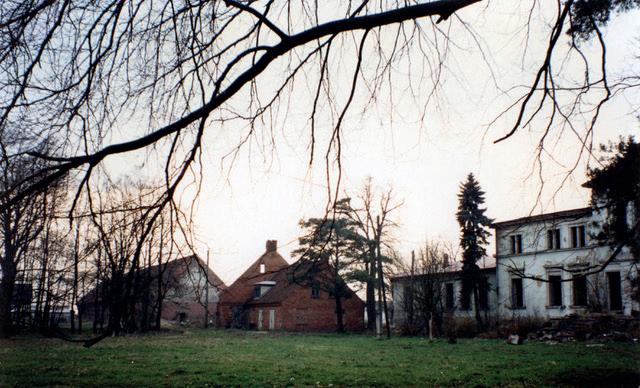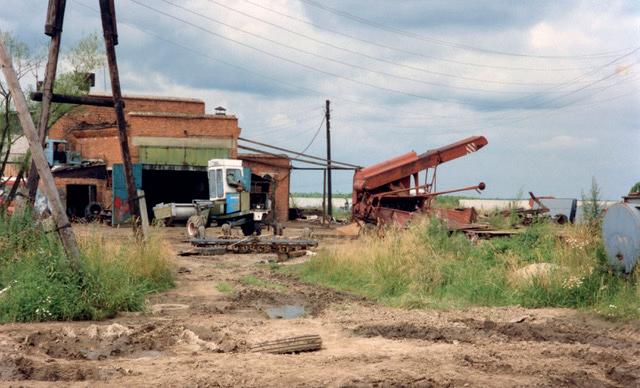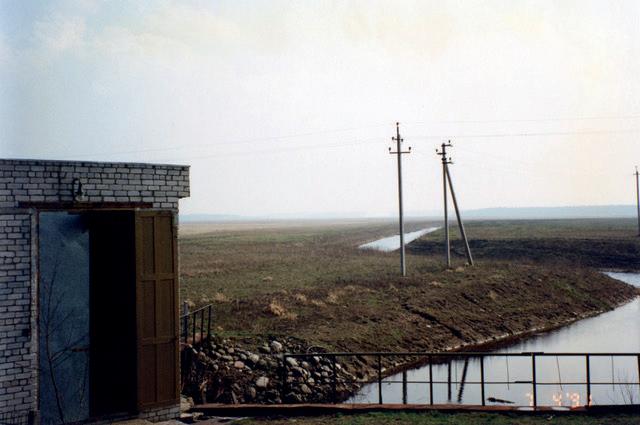
4 minute read
The Nuffield Russia Trust
Initial agreement to set up NRT in April 1991
From left to right: Arable Director of research farm Slavenskoje, Director of Slavenskoje, Governor of Kaliningrad Oblast Jurij Matochtkin, myself, 1st Secretary of the Communist Party Kaliningrad Oblast, James Nelstrop, Evgenij Perov, Head of Agriculture Kaliningrad Oblast
Advertisement
1. BACKGROUND
During his scholarship in 1984 James Nelstrop met the UK - USSR Agricultural Attaché. His successor Dr Zhiltov followed up the contact in 1988 to explore how co-operation with UK agriculture might help Russian agriculture following the easing of Cold War tensions and Gorbachev’s visits to the UK. James went to Nuffield Farming Scholarships Trust (NFST) and Stephen Bullock, James and their wives were invited by the Non-Black Earth Academy of Agricultural Sciences in Leningrad to visit Russia on a fact-finding mission. I had just applied for my scholarship in late 1988. Following their visit, Evgenii Perov, the Academy’s PR journalist, came to the UK as the academy’s representative to study UK agriculture as a guest of Nuffield Farming in early 1990, hosted principally by James. Evgenii became the “Russian Nuffield Scholar”. I got my scholarship but deferred it for one year, because I had a 4 months consultancy contract to finish in Pakistan. Then the Wall came down in November 1989.
2. MY SCHOLARSHIP
For the Russian part of my study in summer 1990, I was the guest of the Academy and hosted throughout by Eugenii. I was also charged by NFST to select some young potential candidates for a British Council/ Nuffield/John Green funded “Introduction to Western Agriculture” a 6 week, fully funded residential course at Brooksby Agricultural College, 2 from Poland and 9 from Russia (amongst others, I selected in Poland Tomasz Zdziebkowski – now CEO of Spearhead International; and Victor Semenov – Minister of Agriculture in Russia 1998, Chairman of Russia’s NFU, oligarch, benefactor and chairman/principal shareholder of Belaya Dacha, a multimillion real estate and agribusiness based on the outskirts of Moscow). Both examples show what impact even small scholarships can have with the right people.
3. KALININGRAD AND THE NUFFIELD RUSSIA TRUST
Immediately after my study, I was contacted via Deutsche Bank by the Governor of Kaliningrad, Jurii Matochkin, and asked to visit the Oblast in November 1990 to see whether we could help their disastrous agriculture. Kaliningrad is the Russian enclave on the Baltic Sea wedged in between Lithuania and Poland. It was the German province of East Prussia before WWII. James came along with Evgenii and with the Governor we agreed to find out whether the Leningrad Academy’s local Research Station at Slavenskoie could be turned into a ‘model’ farm (6,000ha) and vocational agriculture school. In return for us finding the funding and setting up the centre, the Academy was to put the Estate into a Russian/UK Trust (the first of its kind), so there were some assets to work with and use as collateral.
We set up the UK side of the Trust with The Earl of Selborne as first Chairman and later Lord Plumb. James became CEO with HQ at his home; I became arable Director and Paul Charter livestock Director, all on consultancy contracts. We had an initial grant from the Nuffield Foundation and Official Development Assistance (ODA) of £300,000, having discussed the plans with John Gummer, then Minister of Agriculture; and Linda Chalker, Minister at Department of Trade and Industry and others. We then approached the EU who, through the newly established TACIS programme, provided £1.2million over 3 years for the educational side. Farm inputs were bought or provided free of charge by seed companies (semen, potatoes, wheat, barley varieties) and machinery bought or given by UK manufacturers. The ex-principal of Chadacre Agricultural College, Ed Hewitt, was recruited to run the centre with 2 Assistant Farm Managers and local translators. A house was fully renovated for accommodation and the farm had the benefit of the inputs provided under our direction, raising yields manifold.

Hall and part of farmyard. The small house in the middle was turned into our accommodation Another ‘farmyard’ with workshop
All in all 6,000ha of mostly very good land badly farmed
In 1992 Jelzin decreed that all Academy Research Stations/EHF’s were to become Academy properties, rather than remain in the ownership of the State. This appeared to be ideal for our Trust in the making, but the hierarchy in, by now, St Petersburg decided not to sign up, as they thought they would lose their private privileges (honey, meat, dacha etc – all important in those days), if the Kaliningrad Research Farm would disappear out of their ownership portfolio into our joint Trust. Hence the deeds were never signed, and we had to turn the project into purely educational. We continued until the end of the EU funding in 1995, having set up a dairy (still operating today), educating many local aspiring farmers and providing ‘How To Do’ manuals for the whole of the CIS, still used today (how to make hay, grow potatoes, feed cattle etc.). Needless to say, the farm has gone backwards since. The Trust was wound up in 1998. My last visit to Slavenskoie was in February 2020. The research farm does not exist anymore. The NRT was run as a commercial enterprise with all involved either receiving salaries (staff on site) or consultancy fees at half commercial rate and expenses. Many Nuffield alumni got involved in one way or another, providing advice and training. Amongst them were John Alliston, Wynne Jones, Richard Holland, Ken Neilson and Chris Older. When the Trust was wound up, unusually for projects of that kind, we had made a profit. This was largely due to James’ excellent finance management and we decided to donate it to NFST.
Chris Graf Grote NSch







